3 Ways to Deal With Minimum Wage Increases
Minimum-wage laws continue to shift, with California set to raise its statewide ...

Scheduling employees in a restaurant — or any business, for that matter — is a monumental task. There are many variables to take into consideration, and you need to make sure your business continues running like a well-oiled machine.
We’re here to help.
In this article, we’ll start by discussing the pros and cons of both pen-and-paper scheduling and software scheduling. We’ll also tell you why software is the hands-down winner. Then we’ll go over exactly what qualities you should be looking for in a free employee scheduling software.
Finally, we’ll share a number of free employee scheduling software tools, how they work in a business setting, and the best options for your business.

Despite decades of technological advancements and the advent of software for just about every conceivable demand, some managers still prefer using pen and paper to make their work schedules.
Fair enough. That’s how things were done for a very long time, so it certainly serves its purpose. And the good, old-fashioned pen-and-paper method does have its advantages.
For starters, it doesn’t require anything more than, well, a pen and a sheet of paper. As long as you know your employees’ and your business’s needs well, this simple system still works. On top of that, it doesn’t require familiarity with any computer programs or software.
However, the pen-and-paper process is not without its drawbacks.
For one thing, it’s not very conducive to rapid mass distribution. This method relies on either posting the schedule and making sure everyone sees it or producing a copy for each employee and then making sure you get it in everyone’s hand.
Another disadvantage is that pen and paper schedules aren’t the easiest to adjust after they’ve been passed around. Any changes to the schedule require another round of printing and distribution.
What about free employee scheduling software? Let’s start with the downside.
As with any computer program, there’s sure to be a learning curve. It takes a little time to learn the ins-and-outs of any new system or process, and free employee scheduling software is no exception.
Until you become acquainted with the software, it might feel a bit cumbersome. Using free employee scheduling software also assumes that all of your employees have access to the internet and a device they can use to get online.
This might seem like an issue, but a recent study from Pew Research Center shows that 77 percent of Americans own a smartphone.
Those numbers are even higher for younger people: a full 92 percent of Americans aged 18-29 own a smartphone, and the figure drops only slightly to 88 percent for Americans aged 30-49. So it’s not unfair to assume that virtually all of your employees will be able to get online easily.
Now for the advantages of free employee scheduling software. Here’s a list of the amazing things employee scheduling software does:
Even the most basic software can provide all of these benefits. And advanced, industry-specific software can actually do much, much more.
That makes it pretty clear that software trumps pen and paper because software offers all the advantages of the pen-and-paper method, and then some. Sure, there’s a learning curve, but using free employee scheduling software will save you time and money in the long run.
Let’s talk more about what you should look for in your scheduling software.

When making your schedule, there are a number of factors that you have to consider. Any free employee scheduling software worth its salt should take those changing elements into account, too.
Here are some of the variables your employee scheduling software should allow for.
In addition to all of that, a truly superb employee scheduling software should also alert you when there’s a potential problem. For example, if an employee is scheduled for too many shifts and will have overtime hours, that should be made clear in case changes are necessary.
And those are just a few of the features that are specific to the scheduling process itself. What about more general — yet still extremely important — features that apply to your business as a whole?
Here’s what to look for in that regard.
If the software is too difficult, neither you nor your employees will be motivated to use it unless absolutely necessary.
You won’t take advantage of the tools that can potentially make your work life easier because getting them to function properly is just too much of a hassle.
That defeats the whole point of implementing employee scheduling software into your workflow.
Instead, look for an app that offers features such as:
Built-in tools like these can make the software easier to implement into everyday tasks so that you and your team won’t have a second thought about using the software as much as possible.

Versatile employee scheduling software will accommodate teams of all types — be they in-office, remote, mobile, or a combination of all three.
Some apps really only work for teams that report to a specific location every day, while other apps really only work for employees who work online.
Right now, you may only have in-office employees, but there’s no telling how your business will change in the next few years and how your team may have to adapt.
Choosing an app that all types of employees can use is one of the best ways to future-proof your scheduling process.
The right free employee scheduling software should do more than just help you manage shifts — it should also simplify other aspects of your workflow.
More advanced apps, for example, come with tools that can benefit your team in a variety of ways, including:
These features may help your business reach new levels of productivity both onsite and off.
Few things cause a bigger work slowdown than having to change from one scheduling software to another because your business needs to expand or contract.
You can avoid this problem right from the get-go by choosing an app that can accommodate as many users and locations as you need.
That way, if your team grows past five, 10, 50, or 100+ employees, you’ll be ready. Similarly, if your team contracts for some reason, you can still use all the features you’ve come to rely on and won’t have to go through the headache of implementing a new app.
Choosing an employee scheduling software that has the flexibility to grow and expand with your business is another way to future-proof your processes so that big changes don’t throw up big speed bumps in your workflow.
So what program can do everything that we’ve talked about?
Let’s have a look at some of the most common free employee scheduling software tools and find the right one to help you conquer all your employee-scheduling challenges.

Sling was designed specifically for small to mid-sized businesses that work in shifts. From retail and restaurants to education and construction, Sling helps you spend more time on your people and less on paperwork.
Sling simplifies the scheduling process like none of the other free options on this list. In fact, it is the easiest way to schedule and communicate with your employees.
On top of all the intuitive tools you’d expect from an app that’s dedicated to scheduling, Sling provides guidance and helps you avoid conflicts with up-to-date availability and time-off requests. Sling even notifies you of overlapping shifts or double-bookings.
Sling Tasks allows you to assign jobs and follow their progress. You can create to-do lists and assign by name, group, location, or position. You can even set due dates and reminders as completion time approaches.
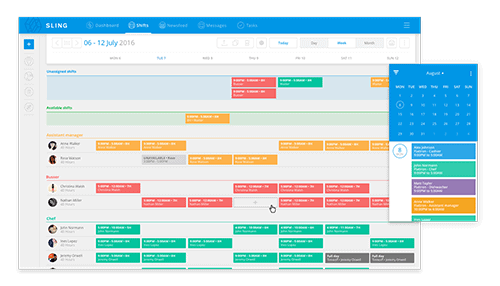
Sling Messages and Newsfeed make communication a breeze. You don’t have to rely on email or some other third-party app.
You can communicate directly with employees on Sling and send messages to individuals or groups. You can even share work files, photos, videos, and links when you communicate.
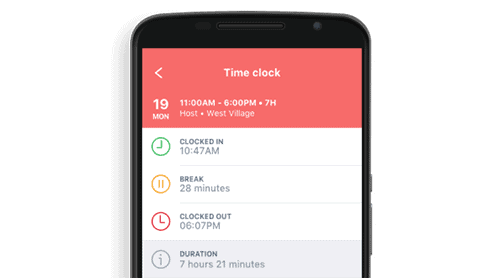
Sling is the most powerful restaurant scheduling tool available. It reduces the time it takes to create and manage schedules and helps managers bring their teams together, keep everyone informed, and build better company culture. What more could you ask for in a free app!

Word processing software — a.k.a. a text editor — is basically just glorified pen and paper. It was created with the written word in mind, not scheduling. Unfortunately, many managers and owners use this software because it came with their device.
Sure, it can get the job done, but you’ll have to put some major effort into getting it right and making it collaborative.
Even if you do decide to use a text editor as your schedule maker, it’s still not super conducive to rapid mass distribution. Like pen and paper, a text document requires another step to get it into your employee’s hands.
That step could be printing it and posting it or handing it out. It could be emailing it to all of your employees (as we’ll discuss below). Regardless of your choice, it’s still another step that makes your life just that much more difficult.
And while a text document is easier to change than pen and paper, it’s still not the most user-friendly tool out there. Formatting a text document to reflect your business’s work schedule can be a daunting task that may require hours upon hours just to set up.
Plus, if you update a text document, you’ll have to resend the whole thing and then make sure everyone sees the new version.
In addition, you won’t see a text document let you know when you’ve scheduled someone to work during a time when they’re not available. Yes, a text document is a step up from pen and paper, but it’s only a very small step.
And while it is more-or-less free, there are certainly better free alternatives out there. Keep reading to find more.
Spreadsheet software is a more common replacement for pen and paper.
It doesn’t have the formatting restrictions that plague text editors when the latter is used to make a schedule because spreadsheet software allows you to easily resize rows, columns, and even individual cells.
So while it’s much more flexible as an employee scheduling tool, it still suffers from the distribution problems that keep this and the previous entry from being your go-to solution.
You’ll either have to print and distribute your spreadsheet-based schedule or email it to all your employees.
Originally, spreadsheets were designed as a database and accounting tool. It is in these tasks that they excel (no pun intended). Like a text editor, it can be made to work as a scheduling tool, but it’s still most at home just crunching numbers.
A built-in calendar app that comes with your smartphone, tablet, or computer can be an excellent replacement for pen and paper, text editors, spreadsheets, and their cloud-based counterparts.
Chances are you have a free version on your computer already. So what makes these programs a viable (though not ideal) choice for free employee scheduling software?
Calendar software is much more amenable to scheduling because it was created with that in mind. Times, days, weeks, months, and even years are already present and can be manipulated with ease.
In addition, creating shifts, which on most calendars would be tasks or appointments, is as easy as clicking a time slot and labeling it accordingly.
So while native calendar software is a large step in the right direction, it still shouldn’t be classified as the best free (or paid) employee scheduling software option.
For one thing, calendar software was made for the use of a single individual. Because of that, it can be a bit difficult when you have to schedule more employees than you can count on one hand.
For another thing, these calendar apps weren’t created with overlapping shifts, rotating shifts, night shifts, and other complicated scheduling practices in mind. Remember, they were intended for one person who could only be in one place at a time.
Native calendar apps also face the same distribution challenges that make native text editors and spreadsheet programs (e.g., they’re not cloud-based).
That’s not to say that you can’t make them work. It’s just that there are better solutions out there for free employee scheduling software.
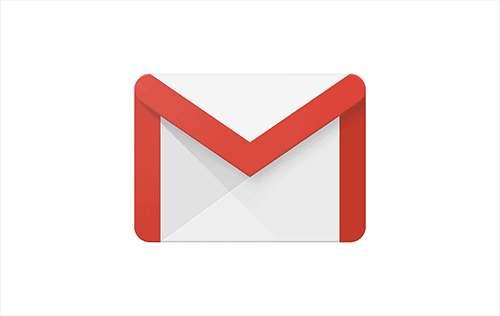
Let’s switch gears for a moment and consider distribution — how you get your schedule into your employees’ hands. Yes, posting your schedule or handing it out personally does work, but it’s much easier to send your schedule via email.
You simply create a mailing list or group that includes all your employees, attach your schedule, and hit “Send.” It requires very little effort to use. It can also reach a large number of people quickly.
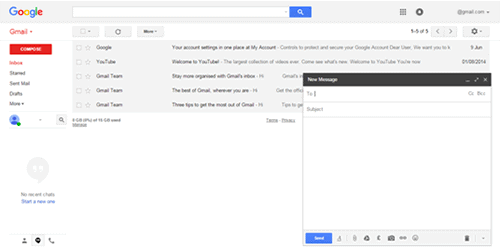
Even though it’s easy, it may not be the best bet for getting your schedules out there. What with texting, instant messaging, and chatting becoming the norm, some people don’t check their email very often — if at all.
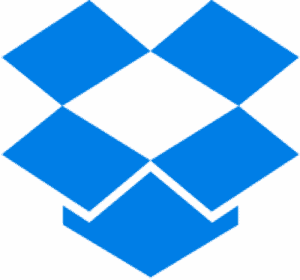
Dropbox is another option that can facilitate your schedule distribution. With Dropbox, you first create your schedule then upload it to Dropbox, where you can specify who is allowed to access the file.
Dropbox can then be instructed to send notifications to all parties involved via email, text, and various other means to let your employees know that a new schedule has been posted.

In some ways, it’s better than email because it can reach those who don’t check their email very often. Like email, though, it’s another step in the difficult process of scheduling.
Is there a way to combine the creation process and the distribution process into something a bit more streamlined? Read on to find out.
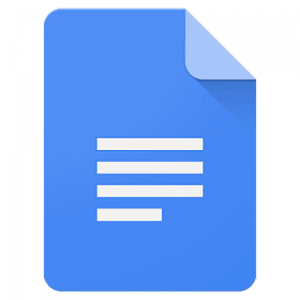
Google Docs takes the creation of your employee schedule and puts it firmly in the cloud. You create your document online. It’s saved online. And you can specify who has access to the document.
Then, like Dropbox, you can send notifications via various methods to all your employees.
Once that’s done, your document is available anytime, anywhere. Your employees just need to access Google’s document editor (which is pretty much everywhere) to view or print the schedule.
With Google Docs, the distribution has been streamlined considerably, but the creation still leaves a lot to be desired. Like the text editors we mentioned earlier, Google Docs was meant for text-based projects like letters and reports.
As such, its most powerful features are focused along those lines and not toward making the scheduling process easier for you.
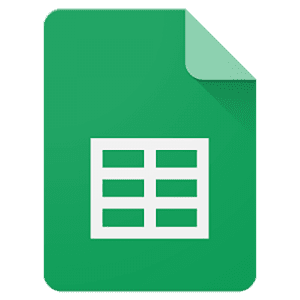
Google Sheets — Google’s cloud spreadsheet program — is much like other spreadsheet apps in that it makes the formatting of the schedule that much easier by allowing you to resize rows, columns, and cells.
You can also add color-coded blocks to delineate employees and include tasks and responsibilities in a more logical and visually appealing way.
Google Sheets, like Docs, can be distributed quickly and easily by sharing the document with specific users. Those users can then access the document whenever and wherever they choose.
The ease of distribution is certainly a plus and the fact that Sheets is much easier to manipulate for scheduling purposes than Docs makes it a better choice among free scheduling tools. But is there yet a better option?
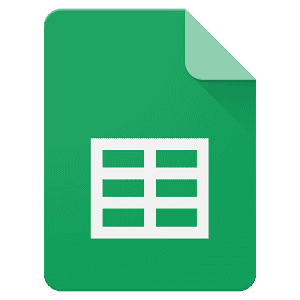
Google Calendar combines the ease of online creation and distribution with the power of a calendar specifically designed for scheduling. Google Calendar replaces Docs, Sheets, Word, Excel, and, yes, pen and paper.
Though Google Calendar was originally designed to be a personal calendar, with some work it can be altered to schedule multiple employees.
From either the day view or the week view, you can click on a time to add an event. You can then label that event (with the worker’s name or duties) and specify the duration (say 5 p.m. to 11 p.m.).
You can also color code the event for easier viewing, attach email addresses to the event for simplified communication, and set up automated notifications to keep your employees informed.
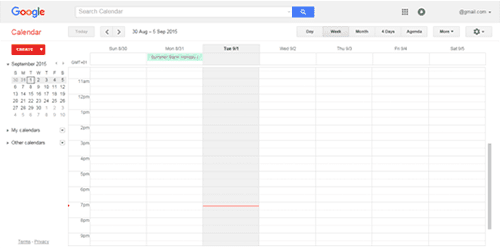
Though Google Calendar may look like the answer to your scheduling prayers, it can be a bit tedious if you have more than 4 or 5 employees. In addition, it can be difficult to decipher if you have overlapping shifts and other complicated scheduling.
Above all, the tools mentioned to this point weren’t designed with employee scheduling in mind. Only one tool was.
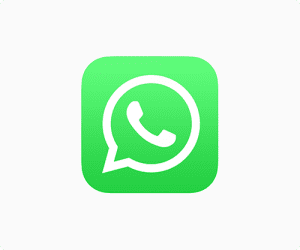
One of the biggest challenges you face as a manager is distributing the schedule to all your team members. You have to consider questions like:
Chances are that when you examine your answers to the above questions, you’ll see that those solutions are not the most productive choices. That’s because your employees don’t use apps like Dropbox regularly other than for work.
Instead, they’re using group chat apps to stay in touch with their friends.
Why not distribute your schedule through an app they’re already familiar with? That’s where these group chat apps start to shine.
The unique thing about group chat apps is that they allow you to exchange messages (texts) with one or all of your employees without paying SMS fees. You can use the app to get your schedule into everyone’s hands instantaneously.

Keep in mind that group chat apps do require a smartphone or mobile device with cell service. If one or two of your employees don’t have a smartphone, you’ll have to come up with another way to reach these individuals.
Here’s how to use a group chat app to distribute your schedule.
Let’s say you use Excel or Word to build your schedule. You can store the finished file on Dropbox and then send the link to your team members using a group chat app. If you choose to use pen and paper, you can take a picture of the finished schedule and send it to everyone using the group chat app.
Distributing the schedule like this is a quick and easy way to reach all of your team members at the same time.
Employing three different tools (e.g., Word, Dropbox, a group chat tool) to get the job done certainly isn’t ideal (we’ll discuss the ideal solution at the end of this article), but it is a way to get around all the shortcomings of each individual tool.
The benefits of using a combination of free tools are instant communication and simplicity for your employees. The drawback is that all of your employees have to use the tools you use.
They’ll need to download them and then learn how to use them. That shouldn’t be too difficult since they’re probably already familiar with these types of messaging apps, but it could be much simpler.
Requiring that your employees download two or three separate programs to access their schedule is a bit much.
First, they’ve got to learn how to use them. And for some programs (like Excel), the learning curve can be quite steep. Second, those programs take up valuable space on their devices.
It would be better if you could just text a link and be done. That’s the premise behind the last (and best) free employee scheduling software tool on this list.
You send your employees a link to a cloud-based document, and they can access it anywhere, anytime.
No need to download multiple complicated, memory-heavy apps to their device. No learning curve that could make accessing and reading the schedule difficult. Just easy schedule access at the click of a button or tap of the screen.
Before we get to that, let’s discuss another common app that many try to make work — often unsuccessfully — for their employee scheduling needs.
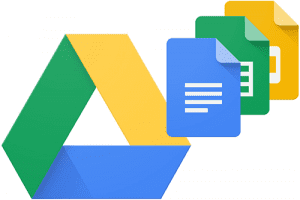
Another viable free scheduling software option is Google Drive. If you’re using Word, Excel, Google Docs, or Google Sheets to create your schedule, Drive is a quick and easy way to make the schedule available to a large number of your employees with just a few clicks.
With Google Drive, you can create shared folders and give specific individuals access to those folders.
You can create one folder where everyone can view the schedule. You can create another folder just for servers. You can create another just for kitchen staff, one for bartenders, one for hosts and hostesses, and one for managers.
All you need to set up permission to access these folders is an email address. Then your employees can view the information via a web browser on any smartphone, tablet, or computer.
As familiar and widespread as Google Drive is at the moment, it only addresses the distribution issue within your scheduling process. It does nothing to alleviate the pain of actually creating the schedule.
Yes, you can use one of the other free employee scheduling software tools listed above to build your work plan, but, as we’ve seen, those don’t really make the process any easier.

Trello is another free tool that you can use to make organizing your team easier. Trello is a web-based list-making application that lets you and your employees work collaboratively to get more done.
Trello’s boards, lists, and cards enable you to organize and prioritize work projects in a flexible and rewarding way. Like Google Drive, you can create Trello boards for different positions within your business and give each member permission to access that board.
Trello also integrates with a number of the apps on this list (like Google Drive, Dropbox, Docs, Sheets, and others) to meet your team’s unique business needs.
And, no matter where you are, Trello stays in sync across all your devices so you can collaborate with your team anywhere, anytime.
Trello even works in real-time so that when someone moves a card, it moves on your board at the same time — no matter what device you’re using.
Within the Trello cards themselves, you can add members, assign labels, make checklists, set up due dates, start a discussion, and much more.
Trello, though, is more of a task or to-do list than a full-service employee scheduling tool. Yes, you can attach documents, spreadsheets, and files to the Trello cards, but this is more of a distribution channel than an app that can actually streamline and simplify the scheduling process.
Trello does have a calendar tool, but, like Microsoft Outlook and Google Calendar, it wasn’t designed to coordinate more than one or two people. You can make it work with three or more employees, but it’s going to be difficult, tedious, and confusing to read.
There’s no need to add more issues to the scheduling process when you can harness the power of an app that was specifically designed to remove all the problems and make organizing your team one of the easiest jobs you’ve got.
We’ll examine the best free employee scheduling software tool in more detail at the end of this list.

Inch is a voice-operated workforce management and optimization app that incorporates task and employee scheduling into its suite of tools.
On the employee side of things, Inch gives your team the ability to schedule and track time-on-task from their phone or a designated terminal mounted in a vehicle or at each location.
On the manager side of things, the Inch app also works as a communication method, a distribution channel, and a payroll processing tool.

ABC Roster is a free software application specially designed to assist in the complex task of organizing your team’s shift schedules.
Built for small businesses with a limited number of employees, it has since expanded to serve larger businesses such as charities, hospitals, and museums as well as the food and beverage departments in hotels and restaurants.
ABC Roster aims to be efficient and user-friendly while providing you, the manager, with a convenient and intuitive way of creating schedules quickly.
The main features of ABC Roster revolve around an easy-to-use interface that allows you to manage all aspects of scheduling — including employee availability, days off, leave, events, bookings, and more — from one screen.
And with ABC Roster’s automated planner feature, the program can generate schedules for you at the touch of a button. Just review the schedule to make sure all shifts are covered according to your business’s needs, then export the schedule to Microsoft Excel, PDF, or HTML document and email it to your team directly from the application.
ABC Roster is a free employee scheduling software tool that is simple and focused solely on scheduling your team. Those benefits, though, are also part of what makes the app limited in its scope and usefulness for most businesses.
ABC Roster does nothing but schedule employees. If you need more integration to help you control labor costs, deal with overtime, and monitor paid time off, a more powerful program may be a better choice.
Another factor that may affect your decision is that ABC Roster is a native application, meaning that you download it to a phone, tablet, or computer and it runs ONLY on that device.
ABC Roster is not a cloud-based tool, so it doesn’t benefit from the power, reach, and usefulness that users of those types of applications enjoy.
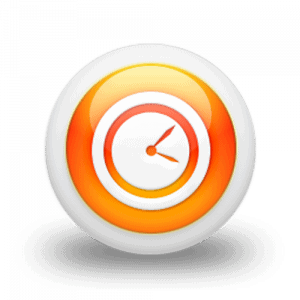
DRoster is for organizations and businesses that need to schedule unlimited shifts, positions, duties, and employees with one program.
Whether you manage a bar, delivery service, catering company, real estate agency, coffee shop, or retail establishment, DRoster offers an industry-neutral design so you can customize the app to your specific needs, regardless of your organization’s size.
In addition to DRoster’s customizable properties and unlimited positions and employees, you have access to templates for recurring shifts, on-board reports, and the ability to create minimum and maximum weekly hours to ensure zero overtime.
While DRoster is better suited for larger organizations, it, like the previous entry on this list, is a native application — downloaded directly to your computer — so it doesn’t incorporate the flexibility, scope, and user-friendliness that the best cloud-based options offer.
And while DRoster does offer a free version of its program, the functionality is limited. If your business needs advanced features — like batch delete, copy duties to future dates, and reporting — you’ll have to pay for the premium version of the software.
If you’re looking for a turn-key solution for all your workforce management and optimization activities, look no further than the last entry on our list.
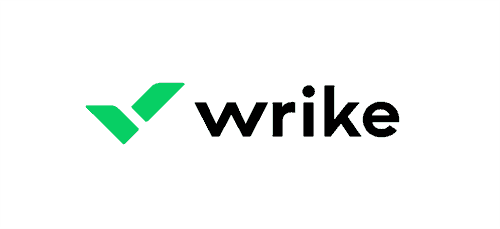
As free employee scheduling software goes, Wrike falls more toward the project-management or task-management side of the process.
Its primary display is a Gantt chart that gives you a bird’s eye view of what’s going on as you create and manage multiple projects.
Wrike gives you the ability to update ongoing work and timelines with a drag-and-drop editor, create tasks and link them according to dependencies, track steps based on milestones and deadlines, and even collaborate with other team members in real time.
But, if you’re looking for shift-planning software to coordinate when your team members work throughout the week, Wrike might not be the best choice.
Yes, it gives employees insight into what they will be doing while they’re at work, but it wasn’t designed to tell them what shifts they’ll be working on what days.
For more precise control of the complexities of shift work, you’ll need a powerful suite of tools that gives you control of your entire staff rota.

Asana is another piece of free employee scheduling software that might work for your business. Again, it all depends on the features you’re looking for.
Like Wrike, Asana falls more on the task-management end of the spectrum and is designed to help you break projects into manageable pieces and assign them to your team members.
Through Asana’s interface, you can sort tasks you’ve created by employee, due date, priority, and a host of other variables. And, with the app’s calendar feature, you can track milestones, deadlines, and progress for multiple projects, large and small.
Unlike Wrike, though, Asana’s main display is a Kanban-style board of columns and tiles that gives you a top-down look at (rather than a side-to-side view of) all the projects on which your team is working.
Since Asana is primarily a project-management tool, it doesn’t function as well as a straightforward employee scheduling tool. As we mentioned with Wrike, Asana wasn’t designed to tell your team members what shifts they’ll be working on what days.
And, if your business depends on more complex work schedules — like 9/80, split shifts, compressed, rotating, or on-call — you’ll need employee scheduling software designed with these issues in mind.
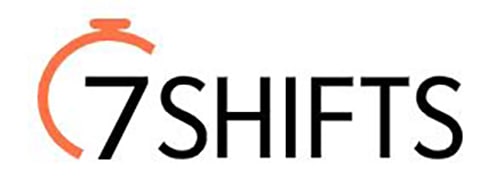
7Shifts is free employee scheduling software designed specifically with small restaurants in mind.
With 7Shifts, you can create custom staff scheduling templates that help you cut down on the time you spend organizing who works when.
And, with other features like cloud storage, time-off-request display, and shift approval, you’ll have more control over your workforce management than ever before.
You can even generate easy-to-understand reports that help you optimize your scheduling process even further.
As nice as 7Shifts is for small restaurants with five or fewer employees, if your business continues to grow beyond that threshold — or if it expands to a second or third location — you might need a more robust app to handle all the details.

FindMyShift is web-based free employee scheduling software that relies on a drag-and-drop calendar interface to simplify the process of workforce optimization.
FindMyShift is aptly named because it helps you find the right person for the job, regardless of the time and task you’re looking for.
It does this by letting you see which employees are available, and which employees aren’t, as you distribute shifts in real time.
And, with the free-form editor, you can add as many items as you like to each cell to help make the schedule as clear and informative as possible.
Note: FindMyShift is only available for iOS and Android operating systems. So, if you want true flexibility — iOS, Android, and Windows on smartphones, tablets, laptops, and desktops — you’d be better off choosing a more adaptable app.

Homebase is free employee scheduling software that helps you:
And, because Homebase is based in the cloud, employees can quickly and easily see what hours they’re working, what hours are available, and indicate when they can and can’t work.
One feature you won’t get with Homebase is a built-in artificial intelligence that provides feedback on, and insight into, the schedule you’ve created.
The Sling app, for example, gives you suggestions on availability, time off, double bookings, and a variety of other variables to help you build the best schedule the first time around. And Sling does all of that in real time as you schedule.

When I Work is a free employee scheduling software tool that is great for small businesses of all types. But where When I Work falls short is in its scalability.
As your business grows, the software becomes less and less practical. Once you reach a certain size (50 or more employees, for example), you may have to switch to a new program altogether.
Instead, start with a program that will grow with your business. Start with Sling. Sling is scalable from one or two employees all the way up to 1000 or more.
When your business is growing, you don’t want to have to stop and change the infrastructure that keeps your team at work. With Sling, you won’t have to.

The Deputy software offers many of the same features as other entries on this list.
But, if you’re looking for an app that your business can use outside the United States, Deputy might not be the best choice. Why? Because the app is only available to US-based users.
In addition, Deputy doesn’t come with customizable reports, a simple user interface, nor a feature that allows team members to clock in or out with a specific user code.
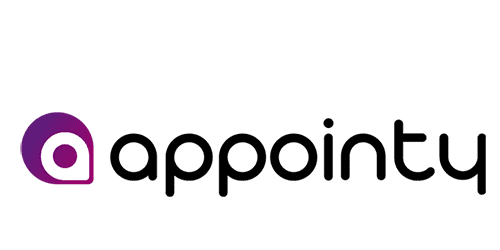
Appointy allows you to:
Appointy is geared more toward a single user, but you could use multiple instances of the app to schedule more than one team member in your business. That said, those employees won’t see their teammates’ work time — they’ll only see their own schedule.
If you need to organize multiple employees or team members and have them display on a single schedule, there may be better options out there.
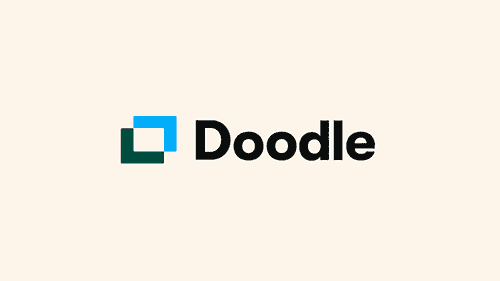
Doodle is free software geared toward finding the best time for your whole team to meet.
While it won’t necessarily help you organize work shifts within a single workday, it can help you coordinate the time when everyone on the clock can get together to discuss what’s going on in your business.
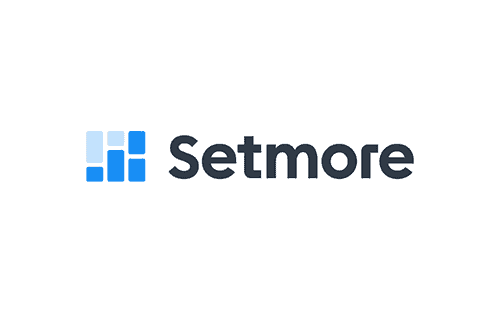
Setmore is a free appointment scheduling app that may make it easier to coordinate your employees’ activities.
Like some other apps on this list, it wasn’t designed to schedule shifts but, rather, to help you and your team manage their activities while they’re at work.
Keep in mind, though, there are single apps that do both — schedule shifts and provide team task management — so you don’t have to rely on two separate pieces of software to give you the functionality that you need.
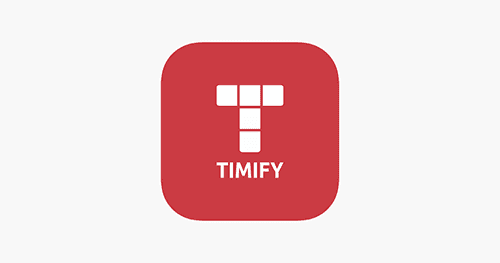
If your business relies on booking appointments between employees and clients, Timify might be the solution. Think of it as a task management app that can help you coordinate bookings and activities while your team is working.
You’ll definitely need another app to schedule each employee’s shifts, but Timify can be useful for directing what they do during their work hours.

Restaurants of all types rely on scheduling software for a variety of purposes, including:
For most restaurants, the ideal scheduling app is one with the flexibility to do all of that (and more) from a single interface.
Busy managers and employees don’t want to spend time trying to piece together separate apps that may or may not work well together.
Because there are so many options out there, it can be difficult to find the free employee scheduling software that’s right for your team. We can help.
There are many free employee scheduling software tools available these days. The one that is right for your business will depend on a wide variety of factors that are unique to your operation.
Regardless of the complexity of schedules you create, the Sling software can help you organize and manage everything from the simplest staff rota to the most complex for one employee or 100 (or more).
Sling includes tools for everything you’ll need to optimize your team, including:
Whatever business you’re in and whatever type of timetable you use, Sling can save you time, improve efficiency, and help your team work better.
To find out more about how these powerful scheduling, timekeeping, and task management features can transform your organization, try Sling for free today.
And, for more free resources to help you manage your business better, organize and schedule your team, and track and calculate labor costs, visit GetSling.com.
This content is for informational purposes and is not intended as legal, tax, HR, or any other professional advice. Please contact an attorney or other professional for specific advice.
See Here For Last Updated Dates: Link
Schedule faster, communicate better, get things done.